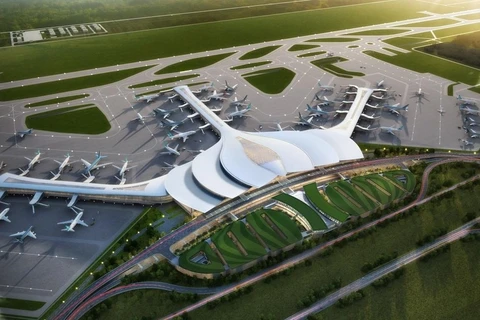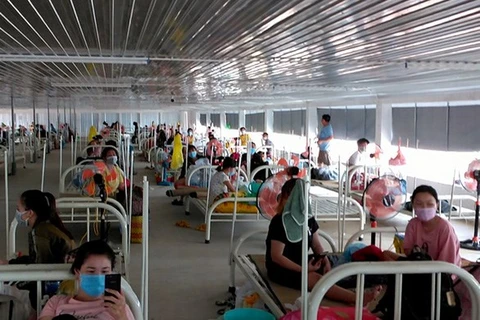Hanoi (VNA) – Dong Nai Biosphere Reserve, whose former name is Cat Tien Biosphere Reserve, has been dubbed the “green lung” of the Southeastern region.
The Dong Nai Biosphere Reserve officially became the 580th biosphere reserve of the world on June 29, 2011. It covers 969,993ha in Dong Nai, Lam Dong, Binh Duong, Binh Phuoc and Dak Nong provinces, with 80 percent of the area in Dong Nai.
Outstanding values
According to UNESCO, the Cat Tien tropical forest ecosystem forms part of the Indo-Pacific Biogeographical Region. Typical forest types include evergreen broad leaves forest, bamboo forest and other mixed forests. The Cat Tien National Park provides protection for this continuous mosaic of forests. Within the park there is great variation in topography, from steep hilly areas in the north to large lowland areas, wetlands, riverine areas and cultivated fields in the south.
The area has been able to retain much of its original diversity due to the survival of areas of unmodified habitat and the suppression of hunting and other forms of disturbance. There are seven different habitat types and a total of 1,610 botanical species on five geographical landscapes. Of the known species, 31 are listed as rare and 23 are endemic to Cat Tien.
The forest types and geographical sites function as habitats for the unique tropical fauna which include 6,085 species of mammals, 259 bird species, 64 reptile species, 33 amphibian species and 99 fish species. These include endangered species such as white-shouldered ibis (Pseudibis davisoni), Indochinese tiger (Panthera tigris corbetti), Asian elephant (Elephas maximus) and the critically endangered Javan Rhinoceros (Rhinoceros sondaicus annamiticus), one of the world’s rarest large mammals.
There are 13 different ethnic groups living within the biosphere reserve. They can be divided into three main groups which have different histories in the area and differ in land use strategies. These groups include recently migrated minorities from northern provinces (such as Tay, Nung, Dao and H’mong), the Kinh or lowland Vietnamese, and the S’Tieng, Chau Ma and Chau Ro indigenous ethnic minorities that have lived in the region for several centuries.
Agriculture is the key production sector. It accounts for the livelihoods of about 90 percent to 95 percent of local people. Other main economic activities include tourism, aquaculture and fishing.
Attractive tourist destination
Located in the Dong Nai Biosphere Reserve, the Cat Tien National Park is an attractive destination to tourists and scientists who want to explore natural mysteries.
The Cat Tien National Park has different types of terrain which alternate between lakes, lagoons and streams, plus more than 90km of Dong Nai River, creating typical landscapes.
Bau Sau Wetlands and Seasonal Floodplains was designated as the 1,499th Ramsar site of the world and the second of Vietnam in 2005.
Bau Sau is located in an endemic bird area in Vietnam’s southern lowlands. It provides habitat for dozens of bird species closely linked with wetlands, including both endemic and migratory ones, with such rare species as woolly-necked stork, peacock, lesser adjutant, white-shouldered ibis, and white-winged duck.
Other rare animal species here include Javan rhinoceros, Asian elephant, sun bear, Asian black bear, tiger and leopard. Particularly, Bau Sau is also the habitat of the Siamese crocodile, which is listed as critically endangered in Vietnam’s Red Data Book (2007) and the International Union for Conservation of Nature (IUCN) Red List (2012).
Formed in 1984, the 323km2 Tri An Lake is the biggest lake in Vietnam, with more than 70 islets. It has become an attractive destination for tourists.
Meanwhile, the D military base in Phu Ly commune, Dong Nai province, is associated with resounding victories of local residents during struggles against foreign invaders. The national historical relic site has also served as an interesting destination for holidaymakers./.
























